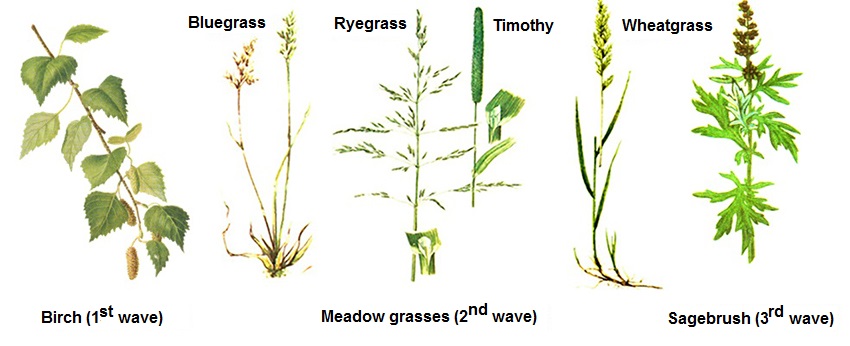|
| ||||||||

ATOPIC ALLERGIC DISEASES
Allergic Rhinitis
Allergic rhinitis and allergic conjunctivitis may be developed by atopic individuals in two phenotypes: (1) perennial and (2) seasonal rhinitis (rhinoconjunctivitis). Patients complain of frequent or constant episodes of nasal obstruction, watery discharge, sneezing, loss of smell, conjunctival swelling and redness, and postnasal cough.
The perennial rhinitis commonly begins at the age of 3-5 years and manifests itself as some of these symptoms all year round and sometimes throughout the life, is severe, persistent, and complicated by nasal polyps, sinusites, and asthma, or conversely mild and subtle. Allergens of house dust mites, cats, dogs, and other pets, and molds are the main responsible factors for IgE-dependent hypersensitivity in patients of perennial rhinitis.
The seasonal rhinitis, or "pollinosis" may begin at any age across large areas of both hemispheres during certain periods of the year when gramineous plants and trees pollinate since the sensitization is caused by allergenic pollens of birch, hazel tree, oak, fescue, rye-grass, timothy, ragweed, artemisia and a wide variety of plants. There are three main pollination waves in the Northern hemisphere:
(1) spring season, when there are flowering trees and shrubbery (birch, oak, elm, ash, poplar, maple, hazelnut, etc.);
(2) summer season, when meadow grasses (timothy, ryegrass, bluegrass, wheatgrass, etc.) pollinate; and
(3) fall season, when there is the pollination of weeds (ragweed, sagebrush, goose-foot, nettle, pigweed, etc).
Immunopathogenesis of allergic rhinitis is based on type I hypersensitivity - atopy.
Diagnostics in allergic rhinitis includes patient's history (family, past medical, social, occupational, etc.), allergic skin tests, component-resolved diagnosis, nasal secretion cytology, video rhinoscopy, acoustic rhinometry, tests for asthma, etc. Video rhinoscopic picture in allergic rhinitis is characterized by mucosal edema (1) and cyanosis (2) in the inferior turbinate.
Treatment for the disease consists of corticosteroid nasal sprays, antihistamines, leukotriene receptors antagonists, and allergen-specific immunotherapy (AIT), e.g., with Staloral®.In addition, a new endotype of allergic rhinitis, local allergic rhinitis, is identified.
©V.V.Klimov